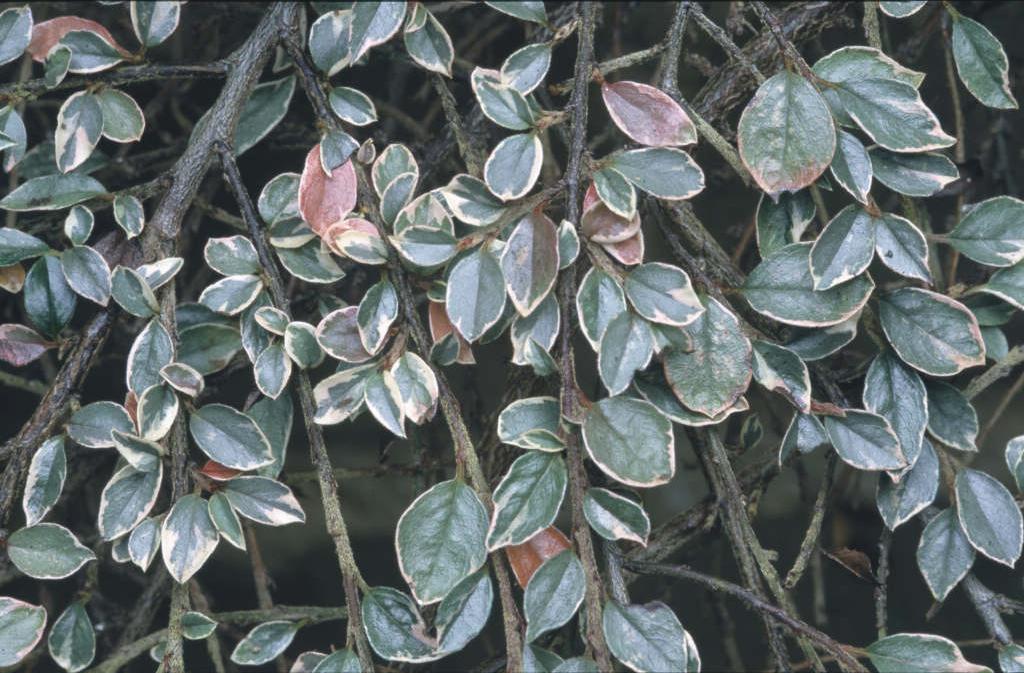Cotoneaster atropurpureus 'Variegatus' (v)
variegated purple-flowered cotoneaster
A low-growing small deciduous shrub with horizontally spreading branches bearing small leaves margined with cream and tinted red in autumn. Small pink flowers are followed by red berries

Buy this plant
Size
Ultimate height
0.1–0.5 metresTime to ultimate height
5–10 yearsUltimate spread
0.5–1 metresGrowing conditions
Moisture
Well–drainedpH
Acid, Alkaline, NeutralColour & scent
| Stem | Flower | Foliage | Fruit | |
| Spring | Cream Green | |||
|---|---|---|---|---|
| Summer | Pink | Cream Green | ||
| Autumn | Red | Red | ||
| Winter |
Position
- Full sun
Aspect
South–facing or West–facing or East–facing
Exposure
Exposed or Sheltered Hardiness
H6Botanical details
- Family
- Rosaceae
- Native to GB / Ireland
- No
- Foliage
- Deciduous
- Habit
- Bushy
- Potentially harmful
- Fruit are ornamental - not to be eaten. Wear gloves and other protective equipment when handling. Pets: Fruit are ornamental - not to be eaten - see the HTA guide to potentially harmful plants for further information and useful contact numbers
- Genus
Cotoneaster can be deciduous or evergreen shrubs or small trees, with simple, entire leaves and clusters of small white or pink flowers in spring and summer, followed by showy red, purple or black berries
- Name status
Accepted
How to grow
Cultivation
Will tolerate dry situations in full sun
Propagation
Propagate by softwood cuttings in early summer
Suggested planting locations and garden types
- City and courtyard gardens
- Rock garden
- Wildlife gardens
- Coastal
- Cottage and informal garden
- Low Maintenance
- Flower borders and beds
- Banks and slopes
Pruning
Pruning group 1 or pruning group 13 for wall-trained specimens
Pests
May be susceptible to scale insects and woolly aphids
Diseases
May be subject to fireblight and honey fungus
Get involved
The Royal Horticultural Society is the UK’s leading gardening charity. We aim to enrich everyone’s life through plants, and make the UK a greener and more beautiful place.